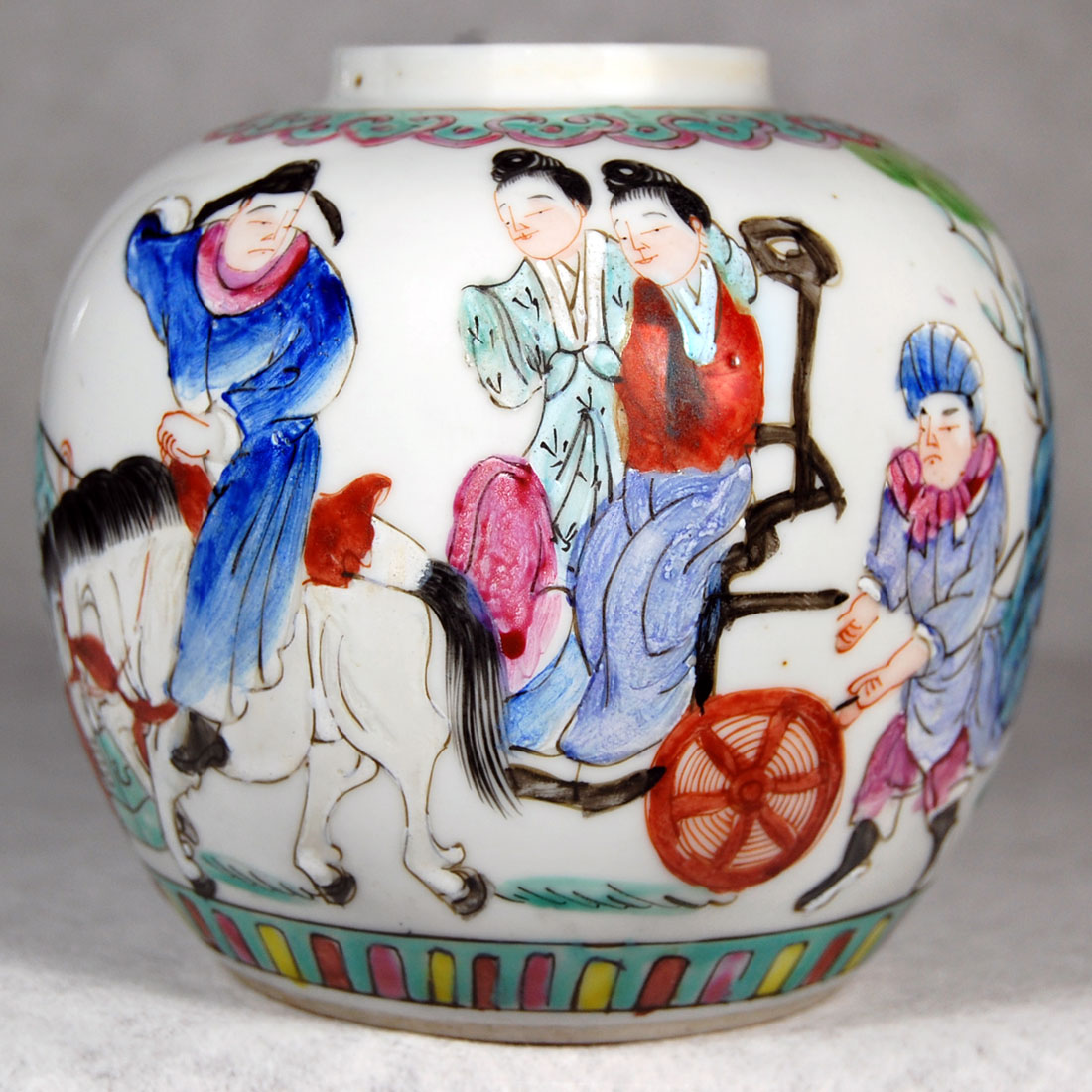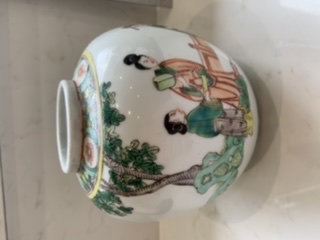
|
Subject:Re: Qianlong or copy?
Posted By: Bill H Thu, Aug 13, 2020
When a made-for-export jar like this was produced at Jingdezhen, the 'minyao" (popular kiln) owner didn't usually have the good fortune to be able to make just one and still sell it for enough to pay his taxes, much less his potters, painters and other kiln-staff and admin expenses. Every piece like this remained in production as long as it was enough in demand to sell profitably.
You must consider though, how this jar, at least from a perspective that precludes handling, looks like it could have been hand-painted. If such is the case, then it is not totally an imitation because of the inherent small differences that occur in the brushwork. I would note that printed transfers came into use in China during the early 20th century and can be difficult to tell from hand-painted patterns, because the transfers often provide only a black-on-white cartoon of the motif, while the enamel colors are added by hand with a brush.
Just because the piece bears a Qianlong or any other faux reign mark does not mean it is a fake, in my opinion (and this point does spark serious debate occasionally). There is an ancient and well-respected category of collectible porcelain that was made in China and called 'Guan Gu Yao' (官古窯), meaning 'Official Old Ware'. It is rooted in the Ming Dynasty, I believe, and the same practice came to flourish during the Qing Kangxi Period (1662-1722) among rich aristocrats and bureaucrats who were able to commission Imperial-quality porcelains with faux base-marks, because they otherwise were forbidden private ownership of such wares bearing a Kangxi reign mark. Imitation marks of the Ming Chenghua reign were quite popular on Official Old Ware of the day.
Another reason I think helped to spawn later popular use of bygone Qing reign marks is that devotees of Confucianism demanded it, especially after prohibitions against it began breaking down due to palace corruption in the late 19th century. I have evidence in my own collection indicating that rules governing the display of five-clawed Imperial dragons on high-quality Chinese porcelains had begun to weaken during the Daoguang reign (1821-50), at least on porcelain for export. Looking at it in the Confucian context, almost everyone had an ancestor who'd been a bureaucrat or otherwise lent honor to the family line during the reign of one emperor or another. When it was time to pay the prescribed Confucian devotions to one's ancestors, many obviously seemed to have thought it would be an especially good idea to have on the family altar a properly reign-marked piece of porcelain inscribed to the memory of their honored forebear.
Here's a set of images to make another point about dating. These photos show a ginger jar with another equestrian motif and Qianlong four-character reign mark. This one also has a paper label saying, "Made in China". That marking had been the subject of a law enacted in the USA around the time World War I began, and its implementation was delayed until the war ended in 1918. By that time, US customs was clearing sets of porcelain for entry by the caseload on the basis of paper labeling, the point being that paper labels could wear off or easily be removed by purchasers. So considering the similarities in the whiteness of the glaze and the famille verte diaper circling the foot of both of our vases, I'd speculate that your jar also was made circa 1920 or later in the Republic period.
Best regards,
Bill H.





|
 Qianlong or copy?
Qianlong or copy?  ( China & Japan ) - Tracie Hancock - Aug 12, 2020 (11:12 AM)
( China & Japan ) - Tracie Hancock - Aug 12, 2020 (11:12 AM)  Re: Qianlong or copy?
Re: Qianlong or copy?  - Bill H - Aug 13, 2020 (01:02 AM)
- Bill H - Aug 13, 2020 (01:02 AM)  Re: Qianlong or copy? - Tracie Hancock - Aug 13, 2020 (12:30 PM)
Re: Qianlong or copy? - Tracie Hancock - Aug 13, 2020 (12:30 PM)  Re: Qianlong or copy? - Bill H - Aug 15, 2020 (08:55 PM)
Re: Qianlong or copy? - Bill H - Aug 15, 2020 (08:55 PM)  Re: Qianlong or copy?
Re: Qianlong or copy?  - Bill H - Aug 13, 2020 (01:51 AM)
- Bill H - Aug 13, 2020 (01:51 AM)  Re: Qianlong or copy? - Lars - Oct 22, 2021 (12:06 PM)
Re: Qianlong or copy? - Lars - Oct 22, 2021 (12:06 PM) 






